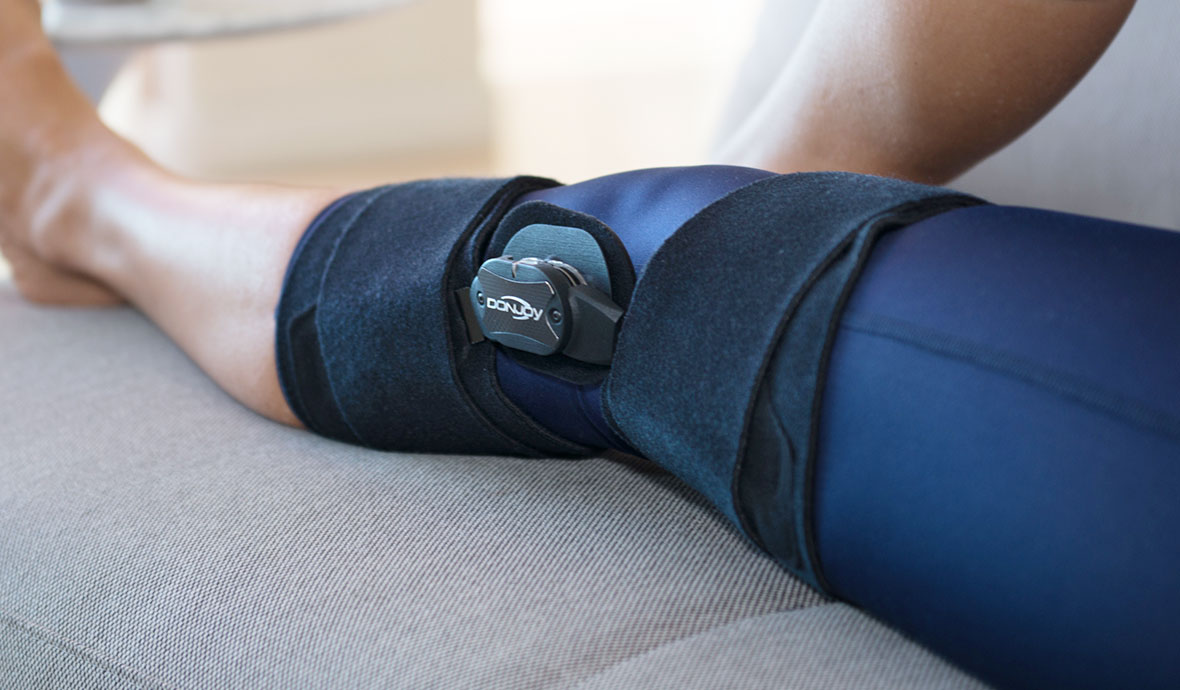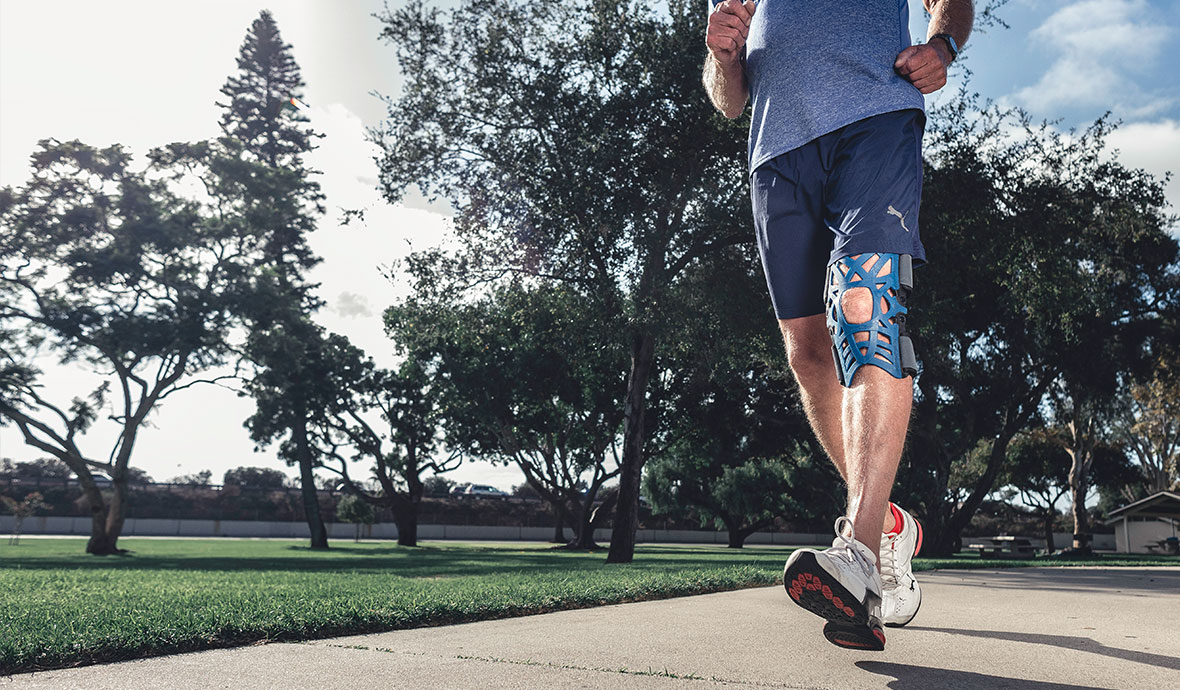If you are physically healthy, it is important to stay active while at home. Exercising can help reduce stress and anxiety for your whole family – whether you’re taking on new at-home projects or playing sports in the yard with the kids, keeping your body healthy and in motion keeps you mentally focused and feeling good.
The knee is one of the body’s largest and most complicated joints—and one of the hardest-working. Your knees support most of your body’s weight even when you’re just standing still. Add the stress of daily activities and sports that involve running, jumping, suddenly changing direction and repetitive motion, and it’s easy to see why your knees are so vulnerable to painful injuries.
Your knees support most of your body’s weight even when you’re just standing still.
Because the knee joint is so complex, it can be injured in variety of ways. Sprains and tears in soft tissues such as the anterior cruciate ligament (ACL) often affect athletes, especially football, soccer and basketball players. Running can raise the risk of tears to the meniscus, which is the cartilage that protects and cushions the knee joint; the meniscus also grows weaker with age, so even everyday activities may be enough to cause injury. Osteoarthritis (OA), a degenerative condition caused by “wear and tear” on a joint, is a common cause of knee pain.
 DonJoy® X4™ Smart Brace With Motion Intelligence™
DonJoy® X4™ Smart Brace With Motion Intelligence™
Managing knee pain at home
If you can’t get out to see a doctor or physical therapist, you can take steps to help treat minor knee pain and injury at home. If you know that a specific activity such as running or jumping is causing pain, take a break from that activity. Even if you’re not sure of the cause, resting the knee as much as possible for a few days is a smart first step that may help.
If you have swelling, cold therapy can help reduce inflammation and relieve pain without drugs. Try to keep the knee elevated above heart level when you’re sitting or lying down.
If your pain does not improve within a few days or becomes worse, contact your physician for a “virtual visit” by online video or phone.
Try a knee brace
Knee braces can help support and protect the knee joint while it heals. The right brace for your knee depends on several factors, including the type of injury you have and your lifestyle. DJO offers a variety of bracing options that help provide a range of benefits from mild support to heavy-duty protection and include features such as:
- Compression to keep the knee warm and help control swelling
- Offloading to help unload pain and pressure on certain parts of the knee
- Range-of-motion (ROM) control to limit bending or straightening the leg
- Hinges to help protect the ligaments
 DonJoy® REACTION WEB® Knee Brace
DonJoy® REACTION WEB® Knee Brace
Rehab at home
When you no longer have pain or swelling and feel ready to begin rehabbing your knee, try these simple strengthening and stretching exercises (but do not do any exercise that causes pain or discomfort):
- Quadricep and hamstring stretches
- One-quarter squats
- Tightening and releasing your quads
- Assisted squats using an exercise ball against the wall
- Step ups
Get back to activities
Once your knee is feeling up to it, ease back into activity. Contact sports may not be an option, but you can walk or jog in your neighborhood, do yard or garage projects, or play basketball with the kids in the driveway. The important thing is to get some exercise to keep your body moving and help relieve stress.*
Knee braces also can help protect your knee from injury, so you can feel confident in your activities. Consider a knee brace if you are looking to help prevent injury, feel any constant mild pain or instability, or are going back to sports and activities after an old injury.
Whether you need a brace to help support an injured knee or help prevent future injury, let us help you find the right brace at Better Braces or at select retailers. Use the Brace Advisor or chat with one of our experts.